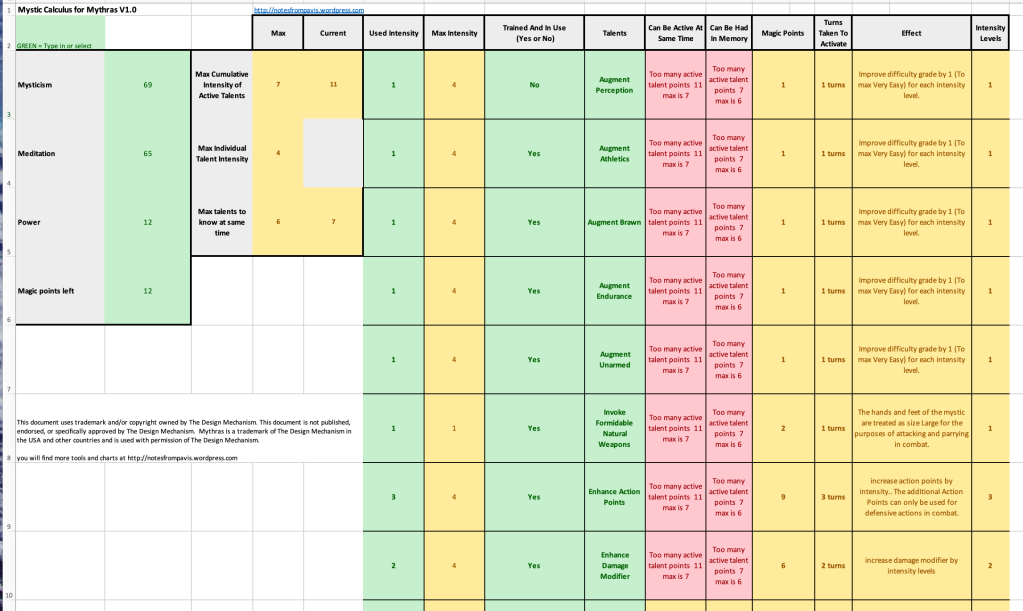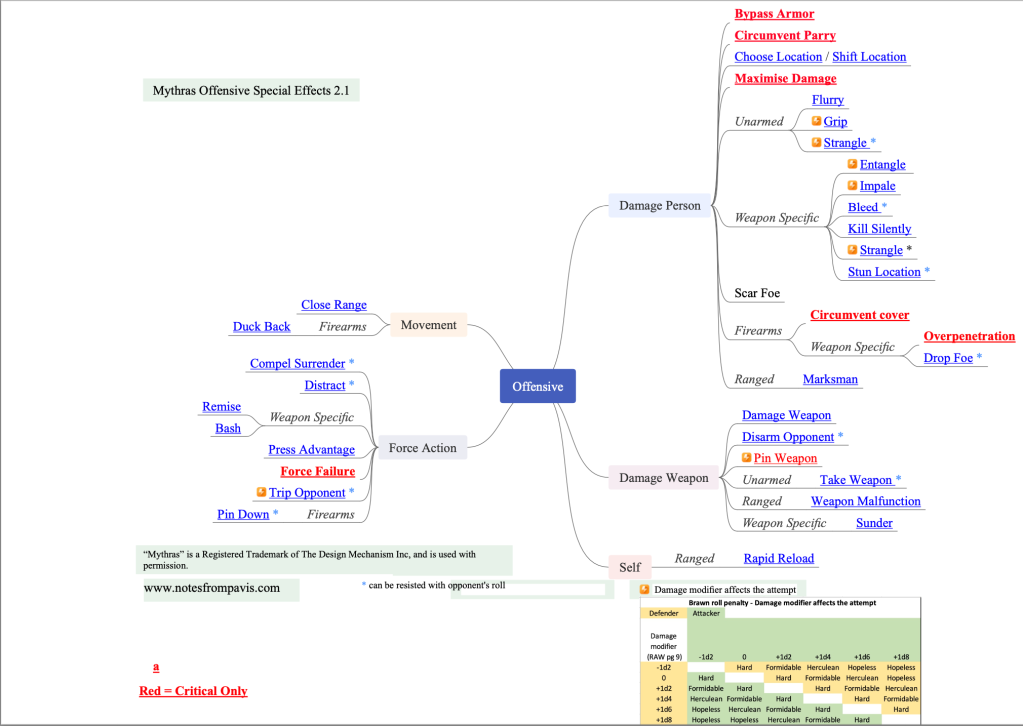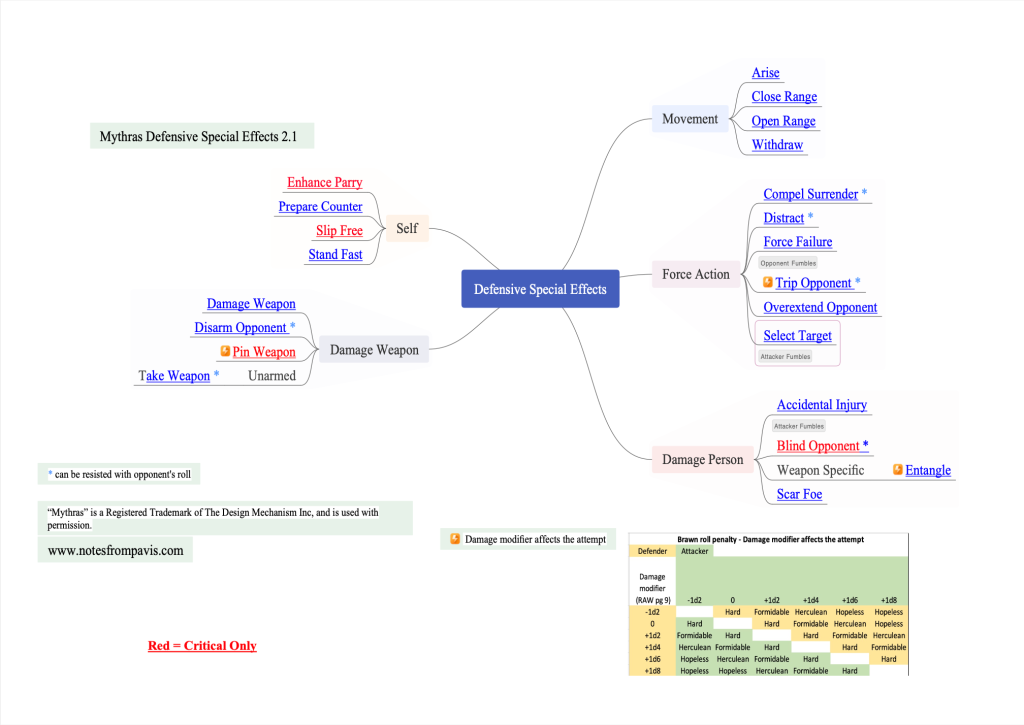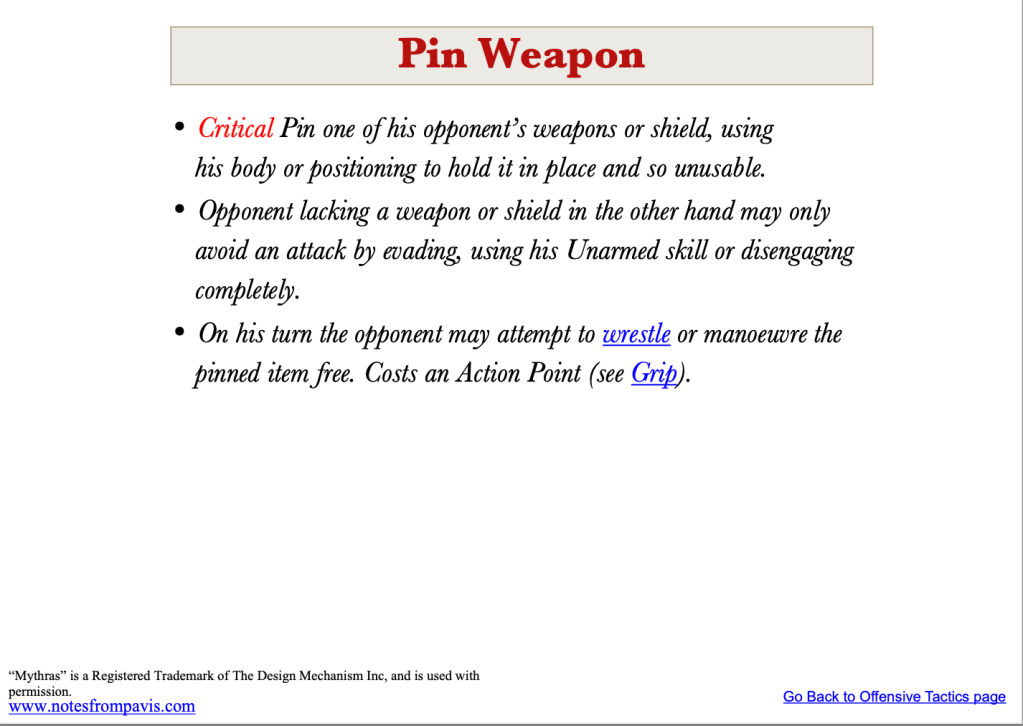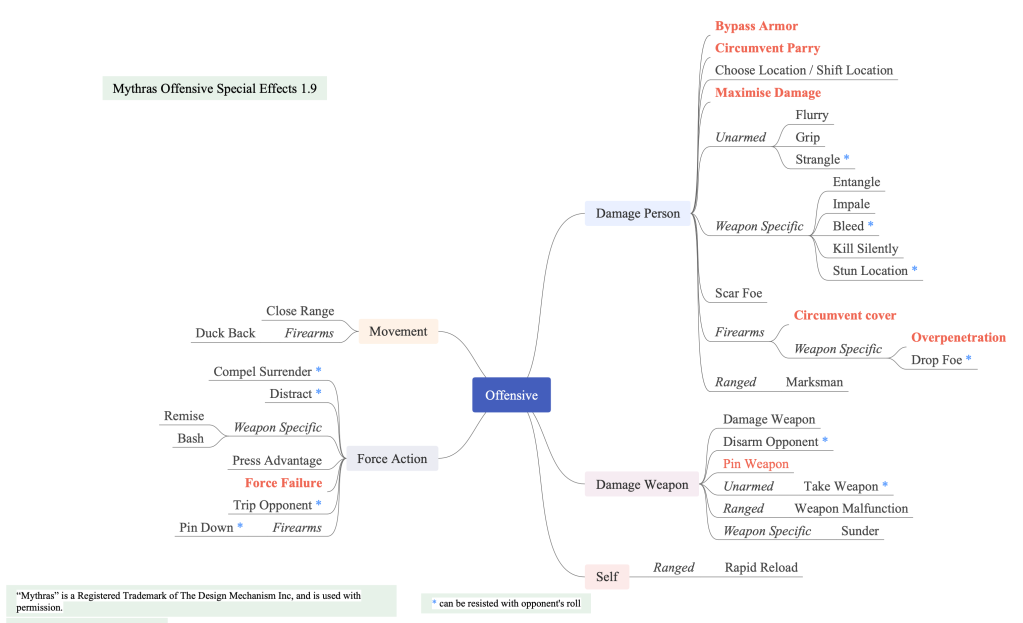My friend Antalon from the Mythras forums wrote an essay on how to be a great player in the Mythras roleplaying game. Here goes:
—-
I Game Master nearly exclusively. I am, however, a bad player. By this I mean that when I am let loose as a player, I just act an arse! Almost instinctively I look for ways to disrupt, betray and connive against my fellow players and the Game Master’s world, plot or adventure. (What inner trauma this reflects is for a different occasion!) As I consider my own behaviour, it got me thinking about how the players I have now, and over the years, have played at my table, especially with Mythras.
Some of my sessions in recent years have been nothing short of a triumph… so I’m a great Game Master then? No. There is a lot of discussion and advice ‘out there’ about what it takes to be a good – or great – Game Master. I’m firmly coming to the view that a Great Game is absolutely a collective effort: Great Players maketh the Game Master! Players have as much or maybe more responsibility for the success of the game as the Game Master – this is, if you look for it, well established advice. There is also a plethora of good player advice generally, essentially boiling down to respecting each other: don’t be an arse like me when playing!
So, how do we help players be great at Mythras specifically? Here, I set out my observations and preferences for player behaviour that mark the difference between a successful – that is, engaging, satisfying, surprising, dramatic, and funny – and unsuccessful game. My views also reflect recent experience with players that are new to Mythras, and fairly new to roleplaying in general. My hope is that I can improve my own behaviour as a player, whilst also easing the introduction to Mythras for others, and help players make their Game Master great!
In brief, players should:
- Be driven, be passionate!
- Play with the other players.
- Focus on the described scene and their character motivations.
- Enable other players to voice their action without undue debate or barracking!
Be driven, be passionate! The Passion mechanics are, technically, an optional rule. But just use them! Getting players to express what make’s their character tick, and what drives them to ‘adventure’, is the first ‘way in’ for a player and Game Master to know what the character and the game world is about. Playing to their passions makes the players invested in the game and makes decision-making much easier: passions ‘tell’ the player what actions or reactions ‘fit’ a situation.
Finding the right way to express the passion can be difficult. There are two ways around this. First, be flexible, and allow passions to be ‘re-expressed’ as the character’s personality solidifies in the player’s and gaming group’s mind. Second, set some thematic guidelines for choosing passions. Discuss what your table wants from the game and what is suitable to reflect the themes of the adventure or campaign setting. For example, for a Monster Island game I asked players to propose three passions based on an ambition or personal goal, a vice or dependency and fear or superstition. From this, across the players, I got “love to create mayhem”, to “total faith in Sarnai” (one of the other player characters), to “loyalty to companions” amongst others. This was not necessarily quite what I anticipated, but it got the players invested, started a discussion and, somehow, this eclectic mix of passions worked!
However, this experience of such varied passions made me conscious that care is needed to ensure passions are not too contradictory, either with each other or between different player characters. Passions could risk outright intra-party conflict. None of us want to condone the “that’s what my character would do” argument! Share choices of passions with the other players, and if they are not working, discuss it and fine-tune. However, there is a balance. Passions should – perhaps ‘must’ – aim for ‘dramatic tension’ between player characters: think about the best weekly TV drama, it is the tensions between the recurring characters that make it worth watching!
Play with the players. A feature of play nowadays is often reliance on video-calls or virtual tabletops. This has exacerbated the practical and real-world social difficulty many players face if – in character – they challenge or engage with each other’s characters. How many times have your players watched passively whilst another player declares – unilaterally – they are “stabbing the prisoner in the face”? This is not a Mythras-specific issue. But, the singular thing that moved my games from okay or good to Great was how, by mutual consent, players focused their attention on each other. In this way, they gave ‘permission’ for each other to respond to or interrupt one another’s actions. Sometimes the interruptions could not prevent an action occurring, but this fuelled the in-game drama. In this player-to-player focused game I found that I too, as Game Master, had ‘permission’ to invite interaction between players, to open opportunities for intra-party drama. It also shifted the focal point of attention from me as Game Master to a shared, inclusive, and animated dialogue. If players act true to their character’s passion where everyone feels welcome to respond to character action, then drama follows, and the game group reinforces positive engagement.
Focus on the described scene and your character motivations. The core mechanic of Mythras is a very simple ‘roll equal to or under’ on percentile dice. But system challenges do exist. Two examples are Mythras-centric: the expenditure and accounting of Action Points (especially combing with movement); analysis-paralysis of combat special effects. With modest effort a reasonable level of system-mastery can be achieved. But players do not need to master Mythras to be an excellent player! What players need to do is listen to the Game Master’s description of event, listen to other player’s choices and their descriptions, then describe what they – the player character – want to achieve and how this could happen. What the player wants to achieve is often informed by their passions. The Games Master’s job is then to translate, or suggest, how to reflect this action with game-mechanics. Focus on the drama and visceral responses, do not allow outcomes to be framed as an optimisation choice. New players in particular find it much easier to simply be narrative: “I leap forward and try to drive the bandit back with the savagery of my attack, I want to stop them threatening Sarnai who is trying to cast healing magic!”, which could be handled as a Press Advantage or Bash special effect. Surely all I’ve done is just describe roleplaying? Yes. But the art of listening and description is an art to be nurtured!
Enable other players to voice their action without undue debate or barracking! This is advice to me as a player and a Game Master. Having established ‘permission’ for player-characters to interrupt, this does not mean that you – as a player – should interrupt. When it is another player’s go, it is for them to state their action. Do not comment, criticise, suggest, scrutinise, analyse or otherwise pass judgement on another player’s choices. I realised what a difference this made when I noticed one of my groups patiently allowing each player to voice their actions on their turn without commentary. The outburst of the player that interrupts saying “No! You should do …” We did not debate this concord. It just happened. And I found that this simple act of respect for each other hugely strengthened trust between players, and the success of my game. It also facilitated in-character interruptions. To be clear, I do not intend that your character passively accepts the actions or consequences of another player-character, remember play with the players and be passionate. The desperate cry of “No!” invites a response between players: “I stab the bandit in the face anyway, and then grin savagely at Sarnai!”. Or, a player shouts-out to the Games Master “Wait, Layla needs to stop this!”, leading to an adjudication of the drama between characters (“Okay, make an Opposed Combat Style roll, if you beat Muammar, then you managed to parry his stab to the bandit’s face!”). But, what if a player asks for advice? In this case, wherever possible, describe your own character’s perspective and their motivations: “what special effect is best?”… “Well, Layla wants to get out of the fight quickly, so she would want you to help us escape… what could you do to help?”. Questions on the rules should be answered by the Game Master.
So, in the end, I’m not sure if this is really very Mythras specific? But, it does not matter. I think these are the things that I should do when playing. I want my players to do this, as it will make my games successful. Our shared responsibility, as players and Game Master, is to make the game a success. Whenever I play, this is how I think I can contribute to that goal.



